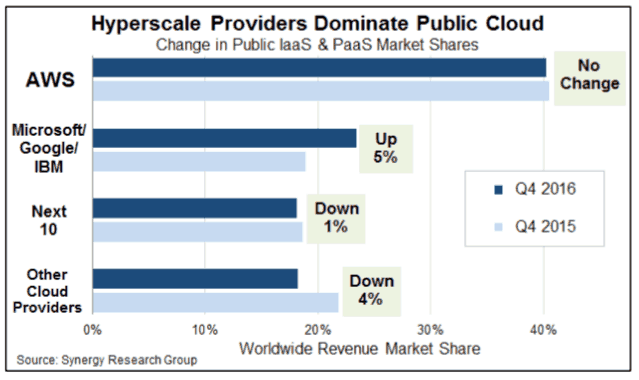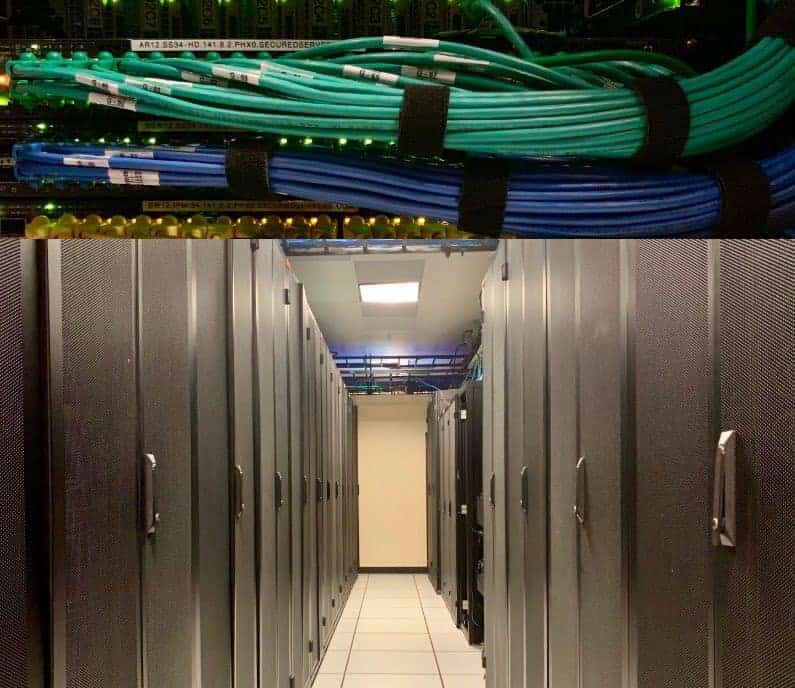Hyperscale data centers are inherently different.
A typical data center may support hundreds of physical servers and thousands of virtual machines. A hyperscale facility needs to support thousands of physical servers and millions of virtual machines.
Systems are optimized for data storage and speed to deliver the best software experience possible. The focus on hardware is substantially minimized. Thus, allowing for a more balanced investment in scalability.
This even refers to the security aspects of computing, as security options which are traditionally wired into the hardware are instead programmed into the software. Hyperscale computing boosts overall system flexibility and allows for a more agile environment.
Customers benefit by receiving higher computing power at a reduced cost. Systems can be deployed quickly and extended without a lot of difficulties.
What is a Hyperscale Data Center? A Definition
Hyperscale refers to systems or businesses that far outpace the competition. These businesses are known as the delivery mechanism behind much of the cloud-powered web, making up as much as 68% of the infrastructure services market.
These services include hosted and private cloud services, infrastructure as a service (IaaS) and platform as a service (PaaS) offerings as well. They operate large data centers, with each running hundreds of thousands of hyperscale servers.

Nearly half of hyperscale data center operators are located inside the U.S.
The next largest hosting country is China with only 8 percent of the market. The remaining data centers are scattered throughout various regions throughout North America, the Middle East, Latin America, the Asian Pacific, Europe, and Africa.
Of the major players, Amazon’s AWS has claimed primary dominance, with Google Platform, IBM SoftLayer, and Microsoft Azure being fast followers. The sheer scale available to these organizations means that businesses increasingly will find value migrating their infrastructure to cloud platforms.
Data Center Requirements Continue to Expand
Who truly needs this much computing power?
It turns out, quite a few organizations either need it now or will require it shortly. The workloads of today’s data-intensive and highly interoperable systems are increasing astronomically. With this shift, the tsunami of Big Data coming into data warehouses is no longer cost-effective or feasible to host onsite or in smaller scale offsite platforms. The cost savings and scalability of moving in this direction are hard to ignore. Especially when users expect immediate results to their most intricate queries and business needs.
Anything slower than a millisecond response is considered unacceptable. This is especially true when you’re working with customers over the internet. Virtualization of servers can cause challenges with speed and often requires organizations to re-architect their legacy workloads to run in this more complex environment.

Benefits of Hyperscale Architectures
The highly attractive side of hyperscale architecture is the ability to scale up or down quickly.
This can be expensive and time-consuming using traditional computing resources. Spinning up servers virtually can be done in hours versus several days with a traditional on-premise solution. That’s only if you have all parts already available onsite.
Business continues to evolve making it even more essential to provide users with access to critical data access points. Hyperscale allows you to approach data, resource and service data quite differently than you could have done in the past.
Consider applications such as global e-retailers, where millions of operations are being made each second.
If someone in Indiana orders the last widget in that particular distribution center, the systems around the country have to adjust to find the next available widget. The substantial amounts of data required for these types of operations aren’t likely to be reduced over the years. The demand will continue to grow and expand as organizations see how leveraging these mass quantities of information provides them with a significant competitive advantage.

Challenges of Growth
On-premise relational database storage sizes have always outranked their cloud-based alternatives.
Many cloud databases still max out at 16TB. Plus, this modest size is one that couldn’t be scaled up directly from a 4TB database. The sheer volume of operations that must be handled all day, every day is staggering. Billions of operations across hundreds of thousands of virtual machines. Scaling network administrators to manage the standard failures alone would be an astronomical task. Much less, if there were any cybersecurity incursions into the site.
Finding physical space to house and then support these servers and determining the right KPIs to measure the health and security of the systems are other hurdles. The location requirements are quite specific and include exceptional access to a talented workforce. Security is also at the forefront, with modular or containerized designs prized for the benefits of mechanical and electrical power systems.
Answering customer requests for updates and questions alone is a staggering proposition when you are looking at this scale of activity. Enterprise customers have specific expectations around security, response times and speed. These all add complexity to the task at hand. Typical cloud computing providers are finding it challenging to stay abreast of the needs of enterprise-scale customers.
Why Choose a Hyperscale Data Center Provider?
Hyperscale is more rooted in hardware than software. The functionality available to computing customers is much more flexible and extensible.
Where previous cloud installations may be limited by the size of specific servers or portions of servers that are available, top hyperscale companies put a greater emphasis on efficient performance to deliver to customer demands.
Form factors are all designed to work together effectively through both vertical and horizontal scaling to add machines as well as extend the power of machines already in service.
